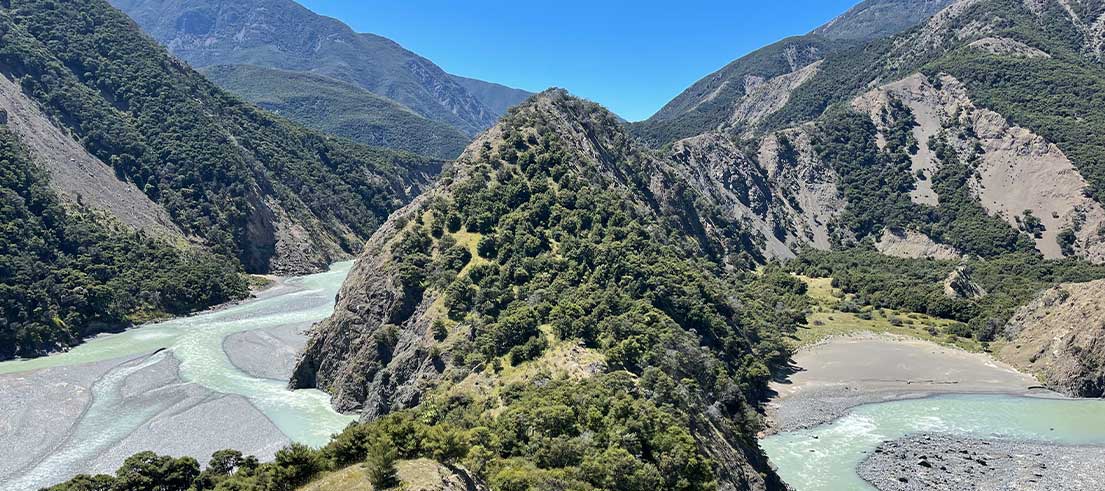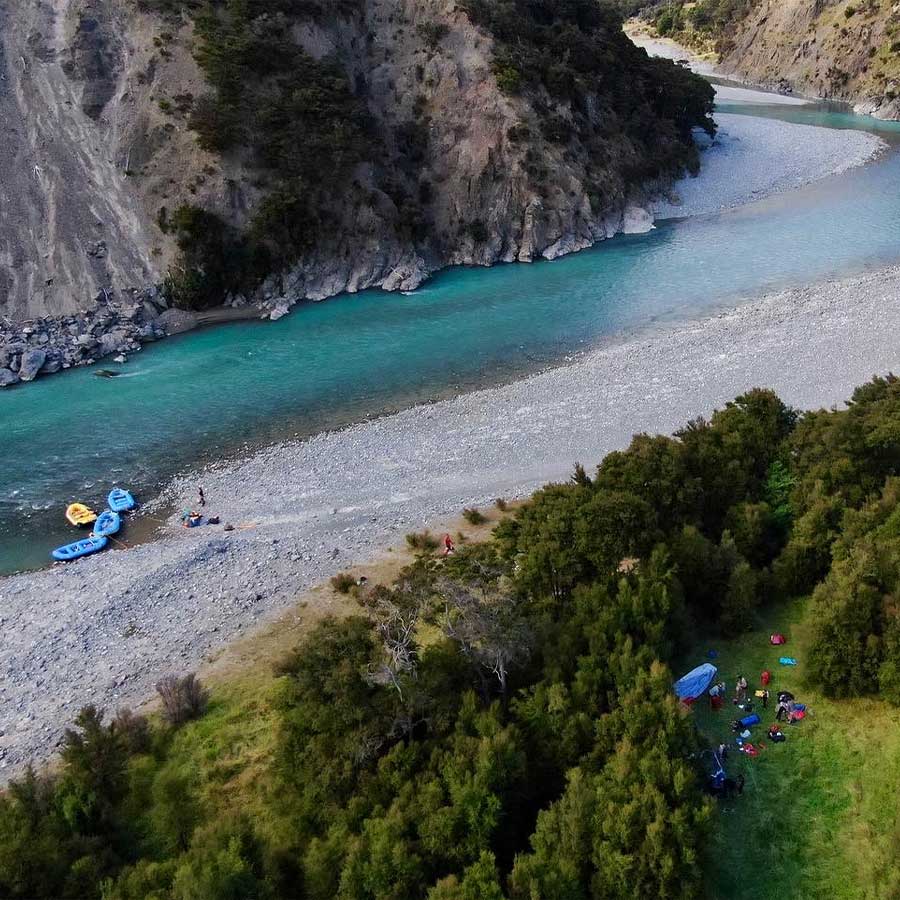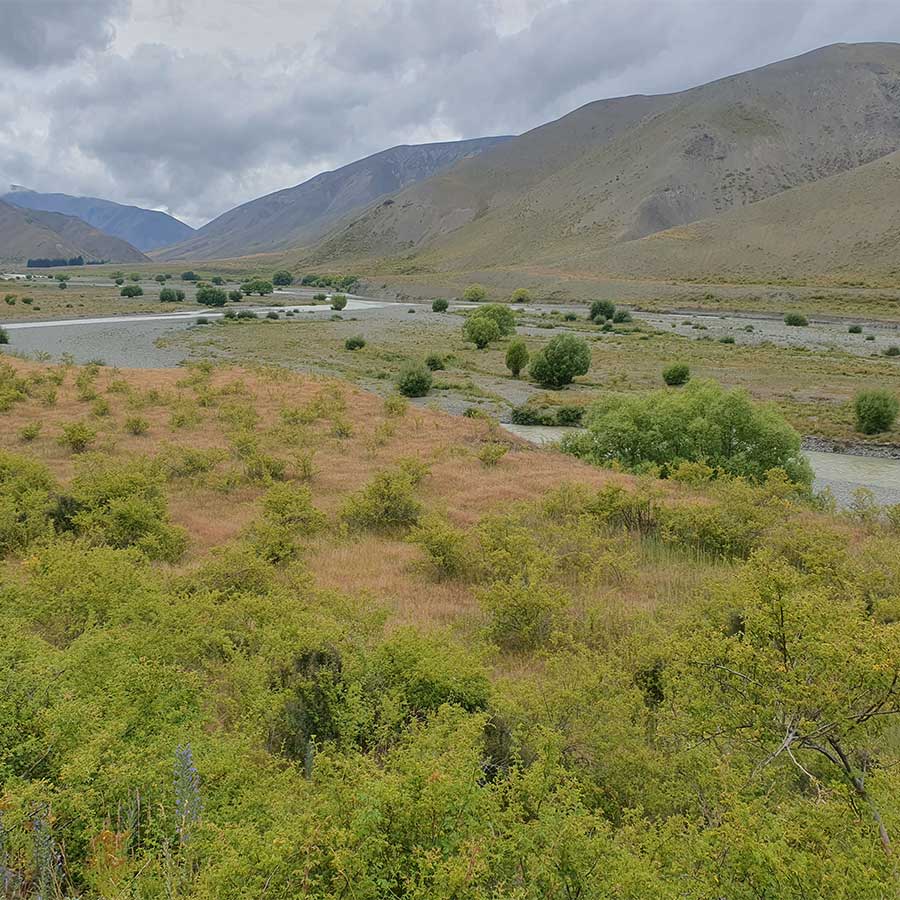
Unique relationship brings biodiversity benefits to Waiau Toa
The Waiau Toa/Clarence River is one of the few wild braided rivers in Aotearoa with limited development or human intervention across its remote 3,200km2 catchment.
A unique, years-long partnership is helping to bring biodiversity benefits to the river, which is home to more than 120 species of flora and fauna classed as threatened or at-risk.
The birth of a biodiversity partnership
Since 2014, we have undertaken a range of projects aimed at protecting and enhancing the Waiau Toa catchment and its biodiversity values, specifically focused on weed control, predator trapping and monitoring.
Many of these projects are in partnership with Te Rūnanga o Kaikōura, Toitū Te Whenua/Land Information New Zealand (LINZ) , Te Papa Atawahai/The Department of Conservation (DOC) , and landowners.
In 2016, Christchurch-based Principal Biodiversity Advisor Frances Schmechel rafted the Waiau Toa with Clarence River Rafting, observing first-hand the advantages and disadvantages of different weed control methods previously used in the remote locations of the catchment.
Two years later, Heath Melville began his role as local Biodiversity Advisor in Kaikōura, tasked with leading the implementation of the newly finished Clarence Waiau Toa Riverbed Weed Management Strategy.
Plans were made to explore partnership opportunities with the rafting team and project partners, and work on finding the best methods of weed control for the unique landscapes within the catchment.
The relationship with Clarence River Rafting has resulted in a number of new initiatives which are helping to deliver biodiversity benefits along the lengthy expanse of the Waiau Toa.
Community-led action key to revived rivers
The first of these collaborative initiatives was a co-hosted community workshop on mammalian predators, which gave the community an opportunity to provide feedback on control methods for feral cats and Southern black-backed gulls/karoro.
The collaboration has also extended to pest and weed control support.
Karoro are exploding in numbers and control is needed as they prey on threatened braided river birds like the wrybill/ngutu pare, black-fronted tern/tarapirohe, and black-billed gull/tarāpuka – particularly their chicks during the breeding season from September to February.
"The rafting team is now controlling karoro nests along the river and has set up traplines for other pests such as rats, hogs, weasels, ferrets, stoats and feral cats at key locations in the catchment," Heath said.
The Kaikōura Water Zone Committee has recently supported the company to further expand these traplines through their Action Plan fund.
Rafting guides provide observations on weed infestations and improving access to carry out targeted control of weeds such as gorse, broom, lupin and buddleia. False tamarisk is a relatively new weed pest which is a priority for eradication across the entire catchment, while purple willow has also been found at a couple of sites, now tagged for eradication.
"The raft access means we’re able to control these weeds and capture data in hard-to-reach locations on the river, particularly in the gorge," Heath said.
Ground control reduces impact on native flora, leading to a greater density of it on river terraces and margins, and reduces light availability for weed infestations.
Collaboration improves environmental outcomes
Pristine braided river environments are important to showcase to visitors but it is clear once you get to know the rafting team that the desire to be a strong kaitiaki of the river is about so much more than business.
Clarence River Rafting has a deep connection with the awa, feeling in many ways indebted to it. Founder, Ben Judge, and his team go above and beyond to help look after it and they are strong advocates for the positive actions and collaboration coming from agencies and land managers.
"It’s great getting to work with the rafting team and seeing their genuine connection and desire to help look after the mighty Waiau Toa," Heath said.
"They’re always happy to share localised knowledge for our mahi, help us prioritise areas for weed control, and offer time voluntarily to help out, most recently to control and monitor karoro nests above the gorge.
"The way they see it, they’re helping us get the gorge section of the awa, which is best accessed via raft, to a low enough density of weeds so they’ll be able to take care of it themselves. As I’ve heard a local farmer say in the lower catchment, Ben Judge is the Clarence."
Biodiversity benefits for everyone
This drive to protect and enhance biodiversity values in tricky spots along our larger braided rivers is key to getting the best value from the work we and others are doing in rivers across the region. It takes a large-scale, holistic approach to reap the most benefits from restoration work.
Ben Judge, founder of Clarence River Rafting says that working with Heath is ‘...amazing’.
"I often have ideas, but they don’t go anywhere. Heath picks up those ideas and runs with them. Sometimes he has to be really dogged to see them through, but he sticks with it and eventually they happen."
By seeing opportunities for partnership and collaboration through a unique lens, Heath’s work with Clarence River Rafting, project partners and local landowners is seeing bountiful benefits for biodiversity across Waiau Toa.


